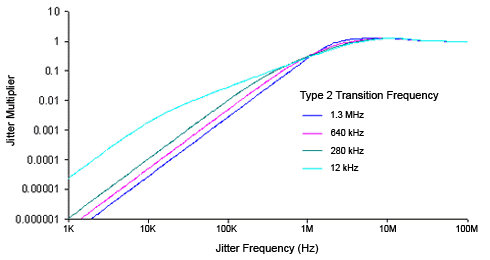:CRECovery:LSELect
Command Syntax
:CRECovery{1:8}:LSELect {LOOP1 | LOOP2 | LOOP3 | LOOP4}
Where the {1:8} specifier identifies a slot number which is associated with clock recovery module. On 86108A modules, specify slot 1.
Query Syntax
:CRECovery{1:8}:LSELect?
Description
This command selects the Type-2 loop transition frequency (peaking) . In normal operation, the Type-2 transition frequency is automatically coupled to the clock data recovery's loop bandwidth and provides the desired loop characteristic for most measurements. Use :CRECovery:LSELect:AUTomatic child command to turn off automatic coupling.
- LOOP1
- Selects 12 kHz (available for all loop bandwidths).
- LOOP2
- Selects 280 kHz (available for loop bandwidths > 600 kHz).
- LOOP3
- Selects 640 kHz (available for loop bandwidths > 1.6 MHz).
- LOOP4
- Selects 1.3 MHz (available for loop bandwidths > 4.5 MHz).
Clock recovery extracts a clock from the incoming signal and provides the DCA-X with a trigger that is synchronous with the data. The clock recovery loop bandwidth primarily determines how well the recovered clock tracks low-frequency jitter on the input signal. Some signals have very large low-frequency jitter from either extremely dirty clocks or intentional modulated clocks such as found in SSC (spread spectrum clocking). In this case, modules like the N1060A
Figure. OJTF for 5 MHz LBW vs. Type-2 Transition Frequency

Command Compatibility
- 86108A/B